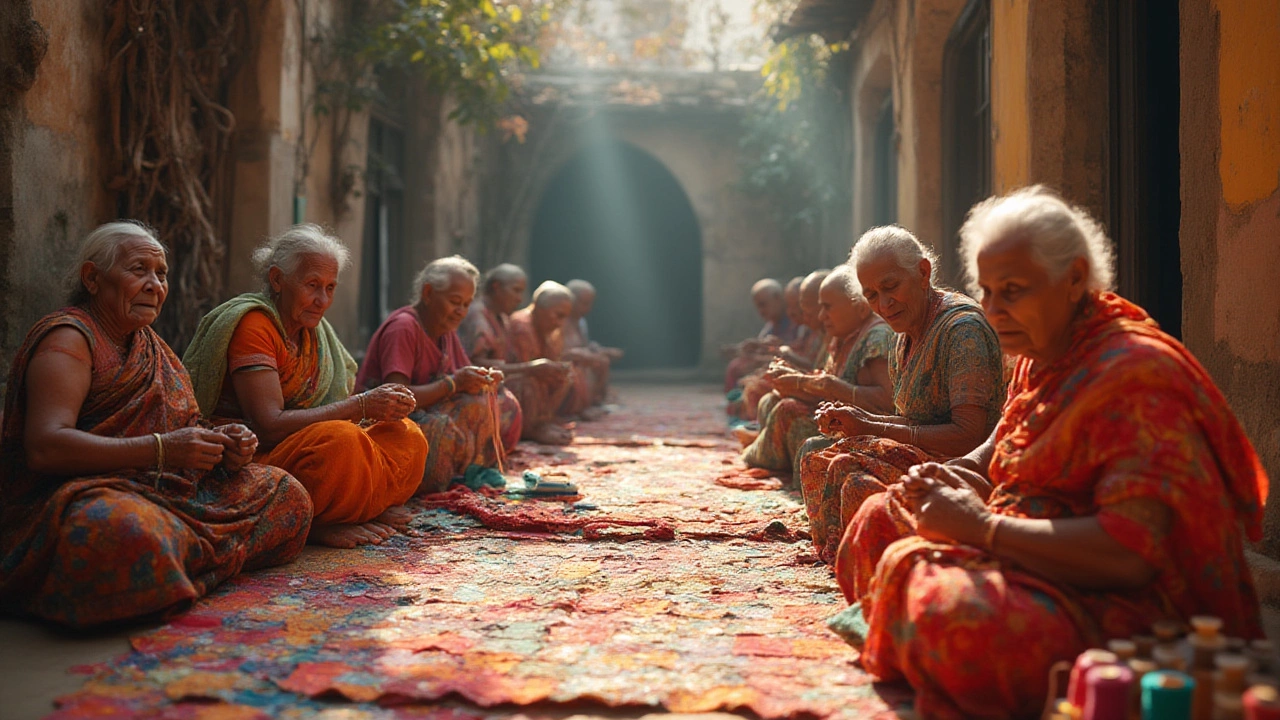
Dig into what makes kantha and sashiko unique—history, stitching styles, uses, and their place in modern fashion and textile art. Learn what sets them apart.
When you hear kantha, a hand‑stitched embroidery style from Bengal that decorates cotton fabrics with running stitches and colorful motifs. Also known as Bengal kantha, it blends folk art with everyday utility, turning simple cloth into a story‑teller.
Kantha encompasses layered stitching, often using old saris, which gives each piece a soft, lived‑in feel. The craft requires two basic tools: a sturdy needle and cotton thread, plus a base fabric that can be repurposed. Over generations, artisans have added small motifs—flowers, birds, geometric patterns—that reflect local life. This makes kantha a living archive of village culture.
Kantha relates closely to embroidery, the broader art of decorating fabric with needlework. While embroidery can be formal or decorative, kantha stays informal, using everyday materials. It also influences the design of the saree, a traditional Indian garment worn on special occasions. Many modern sarees feature a kantha‑stitched border or a full‑body motif, bringing a touch of heritage to contemporary wardrobes.
Another related entity is the handloom, the manual weaving process that produces the cotton base for kantha work. Handloom fabrics offer the right texture for the long stitches, and their regional variations—like Jamdani or Baluchari—often dictate the final look of the kantha piece. When a handloom cloth meets kantha stitching, the result is both sturdy and soft, ideal for quilts, wall hangings, and even fashionable jackets.
Kantha also plays a role in gifting culture. During festivals such as Durga Puja or weddings, families exchange kantha‑stitched items as symbols of love and continuity. The practice of reusing old fabrics aligns with sustainability values, making kantha a timeless gift that feels personal and eco‑friendly.
In modern interiors, designers are using kantha quilts as statement pieces. The layered stitching adds texture to a room, while the vibrant motifs bring a pop of color. Because each quilt contains layers of recycled cloth, the weight feels cozy but not heavy, perfect for draping over sofas or beds.
For fashion lovers, kantha has moved beyond home décor. Tops, skirts, and even shoes now feature kantha panels, creating a blend of street style and heritage. Brands are collaborating with rural artisans, ensuring fair wages while giving these crafts a global platform.
If you’re curious about trying kantha yourself, start with a small project: pick two old saris, cut them into matching squares, and practice the running stitch along the edges. Experiment with colour contrasts—bright pink thread on a deep navy base makes a striking border. As you get comfortable, add simple motifs like tiny flowers or dots.
All this shows that kantha isn’t just an old technique; it’s a versatile tool that links embroidery, handloom, traditional clothing, and modern design. Below you’ll find articles that dig deeper into related topics— from wedding jewelry traditions to the meaning behind Indian accessories— helping you see how kantha fits into the broader tapestry of Indian culture.

Dig into what makes kantha and sashiko unique—history, stitching styles, uses, and their place in modern fashion and textile art. Learn what sets them apart.